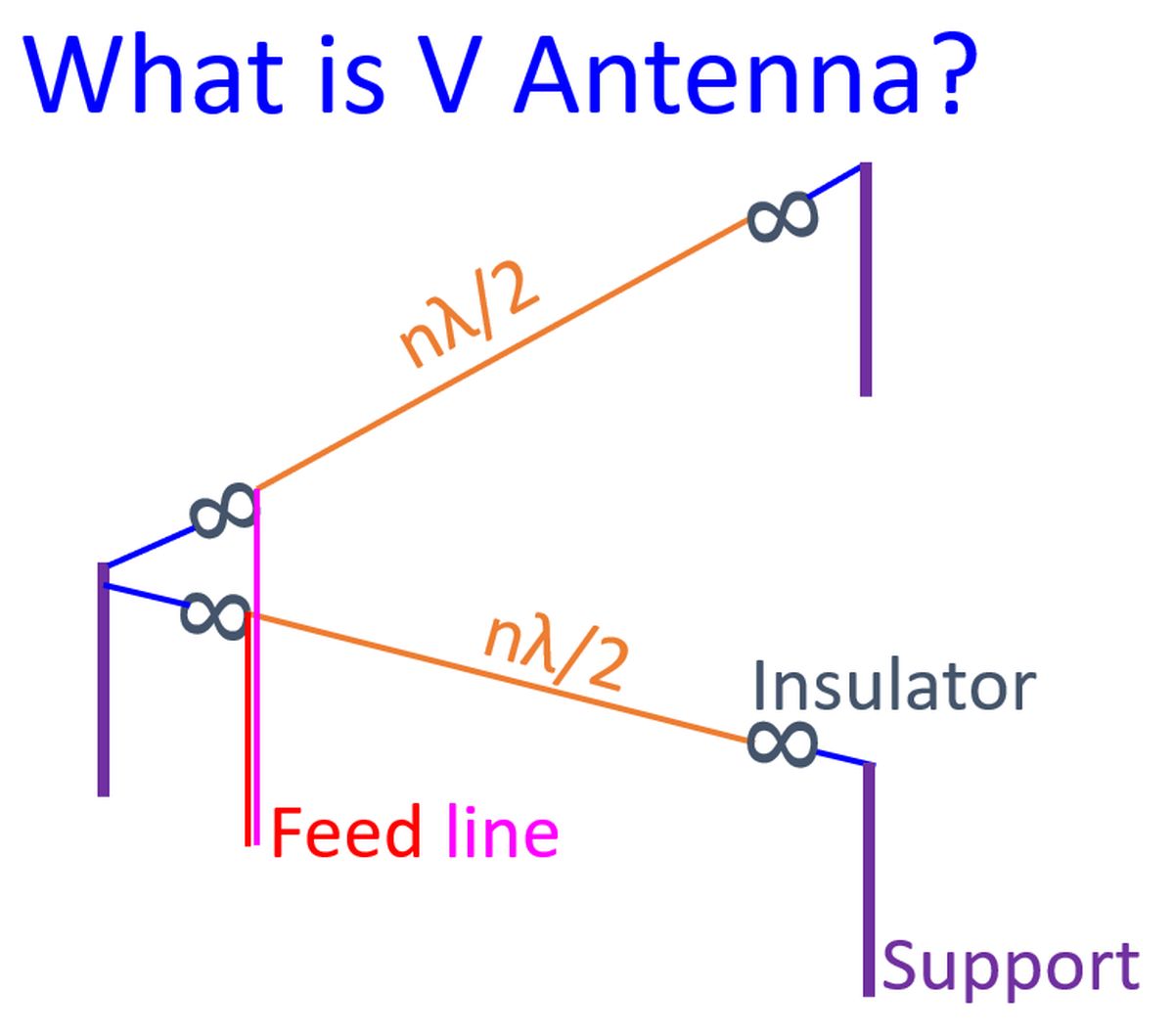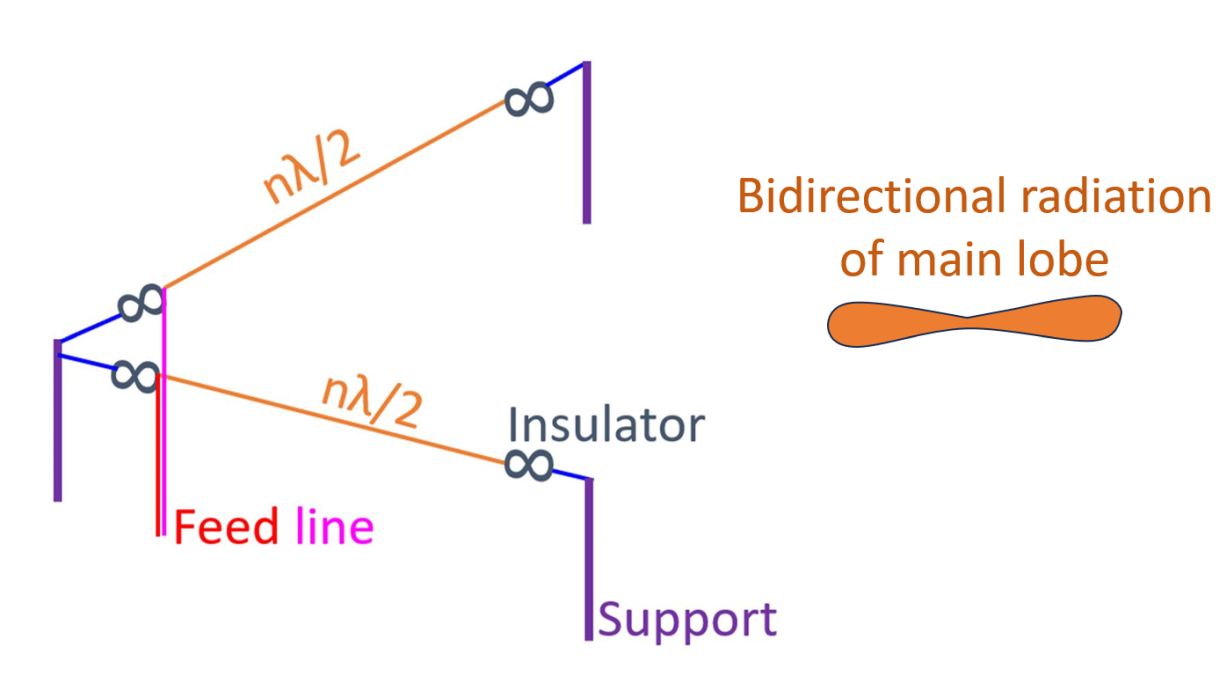What is V Antenna?
What is V Antenna?
Every radio amateur who has operated an HF radio will be familiar with the inverted V dipole antenna as it is often the first antenna put up soon after getting the license and acquiring a radio. My first thought when I heard the term V antenna in a forum was the old ‘horizontal’ dipole antenna which I used to have long back, which would sag in the centre due to the weight of the coaxial cable attached to the feed point, forming a vertical V shape! But that is NOT the V antenna. V antenna is a variant of long wire antenna used for HF in the range of 3 to 30 MHz, with two long wires arranged horizontally in a V shape and fed from the apex of the V. Each limb of the V is fed a signal which is 180 degrees out of phase to the other.

Usual V antenna is a resonant antenna which radiates in both directions with major lobes of radiation along the imaginary axis between the limbs of the antenna and additional minor lobes in other directions which could also be significant. Typcially it has double the gain of a single long wire antenna. Each limb of the V antenna is a multiple of half wavelength of the operating frequency. It is thus used for fixed frequency operation. Impedance of a V antenna is about 800 ohms and is fed by a balanced line. Though the construction is simple, gain is high and cost is low, space needed is high and standing waves are formed.

V antenna can also be made into a non resonant antenna either by terminating each ends with a resistor to the ground or connecting the ends together with a single resistor. Value of the terminating resistor will be equal to the characteristic impedance of the leg of the antenna. When a single resistor is used across the limbs without grounding, it will have double the value. Of course the resistors will cause dissipation of power which is not radiated out, reducing efficiency. A terminated V antenna has a unidirectional radiation pattern while the resonant non terminated V antenna has a bidirectional radiation pattern.

Gain of the V antenna depends on the number of wavelengths of the limbs. If an 8λ antenna is constructed, it can have a gain of 12 dB. But you can imagine the space needed to make an 8λ antenna for 40 m, quite impractical for an average radio amateur. Today afternoon I had read about a radio amateur who had purchased 10 hectares of land just for setting up a remotely operated amateur radio station. Maybe that station can have an 8λ V antenna for 40 m, though I have not tried calculating the actual space needed! Angle of the V is also dependent on the length. The angle increases from 36 degrees for a 2λ antenna to 72 degrees for an 8λ antenna, thereby increasing the demand for space.